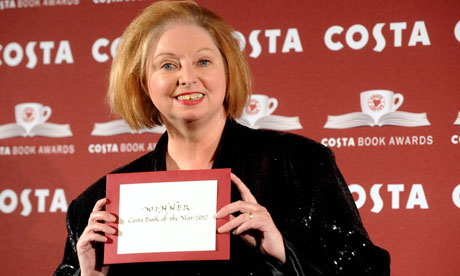 Auē Rona
Auē Rona
Reihana Robinson
Steele Roberts, $25
Inaugural recipient of the Te
Atairangikaahu Award for Poetry, author, artist and organic farmer Reihana
Robinson follows up her featured status in AUP
New Poets 3 (Auckland University Press, 2008) with a vibrant and inventive
first full collection, Auē Rona. Part cosmological revivification of the Maori
legend of Rona and the Moon, part feminist allegory, part edgy, cadent
testimony, Auē Rona mixes the
contemporary with the historical, the factual with the fabled as the
resurrected titular heroine charts her way through modern life. As such, the
core of the book is framed by verse with such evocative titles as ‘Rona does
the hula’, ‘Rona’s descendants: Raro Taro’, ‘Rona mourns’ and ‘Rona wants’, the
latter poem giving an insight into the texture, thematic focus and linguistic play
of the broader work:
I want to
be that glow.
I want to
climb into her headdress
in broad daylight.
I want
a world lit and glowing.
I want to feel claws
on my scarecrow arms.
I want to jostle against,
a different kind of silence.
I want hollow drums, soft
patches, clumps of vegetation.
I want to feaze daylight.
The liberated, street-beat,
street-smart subject matter is evident elsewhere in poems like ‘Indian sister’,
‘What the stars say’ and ‘Maori creation’. Reminiscent of Tusiata Avia’s
collection, Bloodclot (Victoria
University Press, 2009), Auē Rona examines
modern womanhood through the re-forging of tales from the past. Along the way,
cultural belonging and personal sensuality are microscoped. All this and a
cover (plus additional images) by New Zealand (of Maori and German descent)
artist Noa Noa von Bassewitz make for a superb first book.
Old Hat: A Book of Triolets
Mark Pirie
HeadworX Press, $20
Another reworking of tradition
(this time of form rather than topic) finds poet, editor, anthologist, archivist
and publisher, Mark Pirie updating the poetic mode, the triolet. Like the
villanelle and rondeau, the triolet belongs to old French poetic forms which
begun life as songs recited by peasant farmers to each other whilst sewing and
tilling the fields. With an emphasis upon the oral (and thus upon the rhythmic)
and the amusing, the triolet possesses a witty, vibrant succinctness well
utilised in recent years by prominent poets like Wendy Cope. Pirie adapts the
triolet to the New Zealand land, mores and language, as evident in the early
poem, ‘In Thorndon’:
Birds call and cats fight;
I sit and
listen
In Thorndon at night.
Birds call
and cats fight;
It’s nearly moonlight
Here where
trees glisten.
Birds call and cats fight
In Thorndon
at night.
Old Hat is a
collection of close to 40 triolets, with Pirie not only outlining his literary
engagement with the form in an astute ‘Introduction’ but modernising the
conventions of the triolet through verse devoted to both the famous (Margaret
Mahy, Usain Bolt, Dorothy Parker..) and his interests (cricket, rock music…..).
May Old
Hat revive an interest in the triolet amongst many more poets.
King Willow: Selected Poems by Robert J Pope
Mark Pirie (Editor)
HeadworX, $30
When not writing triolets,
Mark Pirie’s been busy researching the life and rejuvenating the work of one of
our ‘lost’ voices, Robert J, Pope. Pope was a popular New Zealand poet and
songwriter from the early 1900s until the end of the Second World War, and
apart from writing verse which actively engaged with the major cultural and
international events of the day (the rise of Fascism in Europe, the 1924-5
Invincibles tour of England and France, the first Labour Government), he also
penned a number of influential songs, particular those recited in schools like New Zealand, My Homeland. The importance
of Pope to this era, as witness and recorder, can’t be underestimated, and in
not only resurrecting this significance of the man but faithfully gathering his
oeuvre, Pirie in King Willow: Selected
Poems does a meritorious task, and edits an interesting and indispensable
book for aficionados of New Zealand poetry, past and present. Another fine and
thorough ‘Introduction’ by Pirie leads the reader through a heady throng of
poems and songs. The title page to the anthology details this selection as ‘No.
1 in the HeadworX Classic Poetry Series’. On the strength of King Willow, I can’t wait to see which forgotten
poet Pirie next restores to our literary consciousness.
Reflections
Marion Jones
Steele Roberts, $20
Dunedin poet, Marion Jones’
second collection, Reflections is a
delicately woven and satisfying story about memory and dysfunction. Over the course of three sections, she charts
the journey of the early years, escapisms and returns of a bright narrator constrained
by the guilt of the death of her mother in childbirth, her father’s distance
and her stepmother’s brittleness. Through poems such as ‘Balloons’, ‘Dog at the
door’, ‘Never told’, ‘Flood’ and others, Jones crafts a series of credible
characters fractured by the strictures of the blended family and old-fashioned
values. Throughout language and imagery provide spark and the possibility of
catharsis, as in the latter poem, ‘A crack’:
Along her back wall,
a crack angles from
the ground in an arch.
Beneath, a geranium
twines a lattice attached
to the rough-cast. Lower
yet, a gash in the plaster
exposes a net of chicken
wire beneath. Until her
children no longer cling
and bloom and climb,
the fissure will remain
a feature of the house.
This collection maps
landscape as much as whanau, with poems sited by topography near and far,
including Mount Hood, Opoho Hill, Taiaroa Heads, Los Angeles, Kazakhstan and so
forth. Always what it means to have a
home is considered and re-evaluated – a place of extrication? a place of
safety? a place of soul? a place of itinerancy? A rewarding read.
My Family & Other Strangers
Laurice Gilbert
Academy Aotearoa Press, $12
From one examination of
family to another with poet and New Zealand Poetry Society National
Coordinator, Laurice Gilbert’s My Family
& Other Strangers. Gilbert’s book is shorter than Jones’ but packs no
less poetic punch. The whanau here isn’t the family tattered by dysfunction,
but the family bonded by quirkiness. Through poems such as ‘Strangers’, ‘Life
is a Grocery Store’, ‘Safe at Home’ and ‘Family Snapshot’, Gilbert builds a
picture of an unconventional family. Along the way, paternity, sibling
fraternity and rivalry, maturing and loss are explored. Often the inventiveness
the author uses in her thematic approaches is paralleled by a skillful deployment
of poetic form which includes a villanelle, prose-poem and pantoum. In ‘Another
Reason Why I Don’t Keep A Gun In My Handbag’ Gilbert also displays an adept
engagement with the work of other poets (here, American poet Billy Collins’
‘Another Reason Why I Don’t Keep a Gun in the House’):
I’m tempted to depict my mother-in-law as barking.
Whenever we meet she doggedly insists
on establishing her position as matriarch,
sharing family anecdotes she’s made up,
or misconstrued, or simply lost the gist.
Her son, heir to his late father’s sanity genes,
books a long overdue duty trip to Taupo.
After five chocolate-filled road trip hours
my buttons come alive:
sparking, sparring, scarring.
I wish I could turn her off as I arrive.
She asks my husband where I will sleep.
Scorning the spare double bed
as too wretchedly hot to share, has already
set up a stretcher for me in ‘his’ room…
Along the way, as in
collection’s second section, ‘Vincent – an autobiography’, the eccentricity of
the familial is distinguished by the intimacy of the isolate, the challenges of
being daughter, sister and mother is contrasted with the trials of being an
artist. At $12, this is a steal.
About the reviewer
Siobhan Harvey is the author of the poetry
collection, Lost Relatives (Steele Roberts NZ, 2011), the book of
literary interviews Words Chosen Carefully: New Zealand Writers in
Discussion (Cape Catley, 2010) and the poetry anthology Our Own Kind:
100 New Zealand Poems about Animals (Random House, 2009). Recently, her
poetry has been published in Evergreen Review (Grove Press, US), Meanjin
(Aus), Penduline Press – The New
Zealand Issue (US), Snorkel (Aus) and Structo (UK). She’s Poetry Editor of Takahe
and coordinates New Zealand's National Poetry Day. She was runner up in 2012
Dorothy Porter Prize for Poetry (Aus), 2012 Kevin Ireland Poetry Prize, 2011
Landfall Essay Prize and 2011 Kathleen Grattan Award for a Sequence of Poems,
and shortlisted for the 2012 Jane Frame Memorial Award for Literature. A Poet’s
Page containing a selection of her recorded work and texts can be found on The
Poetry Archive (U.K.), directed by Sir Andrew Motion.
















+Michael+Lionstar.jpg)






